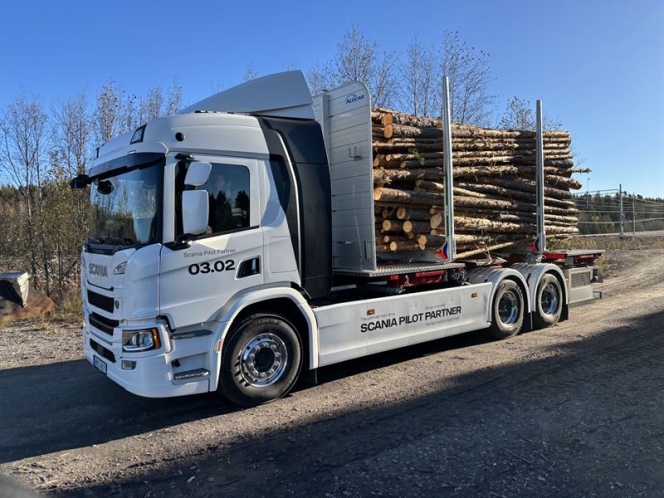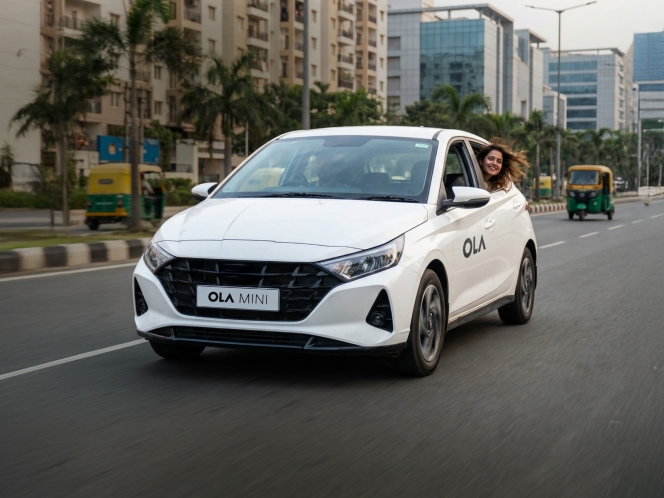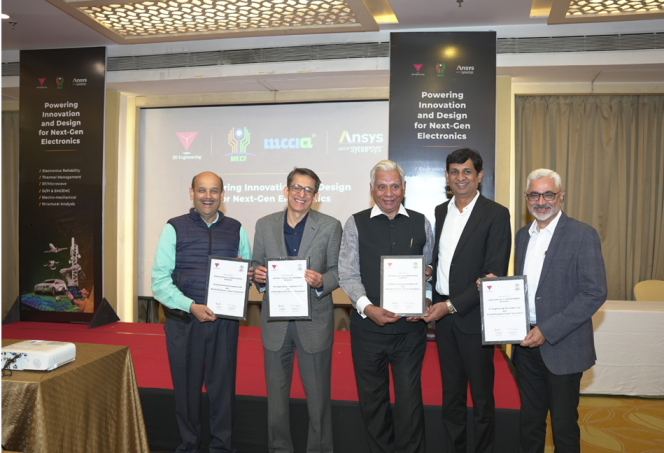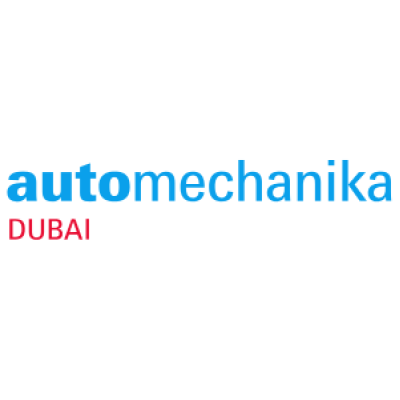
After three years, the Automotive Testing Expo will return to India in April 2023. The show will avail the platform to host the most up-to-date technologies in ADAS and autonomous vehicle testing, NVH measurement tools, test rigs, simulation packages, durability testing technologies, crash testing, dynamometers, emission measurement systems and dynamic assessment tools, as well as countless service providers such as proving grounds and test facilities. The German edition, which will take place between 13 and 15 June 2023 in Stuttgart, will be hosted on a bigger scale with expected exhibitors of more than 450.
In light of the evolving dynamics of the automotive testing industry, organisers of the upcoming Automotive Testing Expos in Germany and India are placing big bets on the events.
The Indian edition of the Automotive Testing Expo will take place between 18 and 20 April 2023 in Chennai, while the German edition will happen between 13 and 15 June 2023 in Stuttgart. Apart from these two editions, the show will be hosted in Korea, China and US.
Tony Robinson, Founder and CEO of UKIP Media & Events, said, “After three years, we are once again hosting the Automotive Testing Expo in India. It is a long gap. We received a terrific response when we announced a few weeks ago that we would return to Chennai in April 2023. Many very excited companies want to exhibit their new and existing technologies. We will find people in India who haven’t had a chance to see the new things available in the automotive testing industry. They will be very keen to come out and look at everything that’s on show in April next year. So we are excited.”
Automotive Research Association of India (ARAI), Automotive Test Systems, DEWESoft India Pvt Ltd, Keysight Technologies India Pvt Limited, MTS Systems Corp and National Instruments are others who have confirmed their participation. In 2020, the Indian edition of the Automotive Testing Expo hosted 125 exhibitors and the same number is expected for the upcoming edition.
The Germany show did not take place in 2020 and 2021 thanks to the Covid pandemic. However, the show came back in 2022, which Robinson terms as a ‘fantastic show’. “Visitors came to the show for three days to see the latest technology in action and to learn about their uses and advantages. I would expect it’ll be even more fantastic in 2023. We expect to see more people come in because this year there has been a transition between the pandemic and people coming out and feeling comfortable,” added Robinson.
The Stuttgart Automotive Testing Expo, which takes place concurrently with a show on ADAS and autonomous vehicle technology, is expected to include between 450 and 500 exhibitors. “As a result, all major players are back in operation and prepared to display. There will also be numerous new businesses and start-ups along with the established major automakers,” said Robinson. The last edition in Stuttgart witnessed over 300 exhibitors.
Leading companies such as Anthony Best Dynamics; Applus+ Laboratories; DEKRA; DEWESoft GmbH; Diversified Technical Systems, Inc.; dSPACE GmbH; Keysight Technologies; Link Engineering Company; MTS Systems Corporation; National Instruments Germany GmbH; Robert Bosch; Rohde & Schwarz GmbH & Co KG; Siemens AG; ZF Friedrichshafen AG; SGS; TUV SUD Product Service GmbH; Michigan Scientific; Photron and others will exhibit at the Stuttgart show.
Despite the challenges brought on by the Covid pandemic, the organisers are closely monitoring the shifting trends in the automobile and automotive testing industries, which aids in their show planning. “Our job is to make sure we keep an eye on the developments and track down the new businesses that are entering the market. And we always act in that way. We take care to stay in touch with the important figures in the field of automotive testing engineering. We are dealing with a highly specialised community, so it’s essential that we are tracking and communicating and discussing with the automotive testing teams that cover many different facets of engineering. Our responsibility is to establish connections with all of the new businesses that are entering the sector. When marketing an event, we are in touch with the right people. It’s not frightening; it’s just what we do,” explained Robinson.
The shifting focus of the global auto industry from ICE vehicles to electric, autonomous and shared vehicles presents a wide range of opportunities and challenges, and this transition reflects on automotive testing as well. “The automotive testing market is exciting and in transition. We have been in the automotive testing world for nearly three decades, and any industry will have a transition. There’s no evidence that the big players are dropping by the wayside. Companies that are very ICE testing-oriented are not likely to come out exhibiting. This is not a great period for them. But then again, the rise of the battery car and battery testing (and range testing) and a lot of other things that we’ve been talking about, like AI and simulation, are things that are bringing new companies in,” added Robinson.
Robinson asserts that the complexity of automobile testing technologies and systems is drastically increasing, pushing the industry for automotive testing very hard. The newest products, services and technology are displayed at the automotive testing expos to help test, development and validation projects move more quickly. Robinson further explained, “The word I tend to use is fidelity. Automotive testing is a relatively young industry; if you go back even to the 1960s and 1970s, a lot of automotive testing was done in real life – physical testing of cars, natural crash testing of cars with human drivers. As the computer and IT industry developed and blossomed, a fascinating automotive test and development engineering industry grew. Higher and higher levels of fidelity are required in automotive testing for infinite and finite environments. We’re in an environment where everything is pushing automotive. Obviously, the electric and hybrid vehicles and batteries themselves need a lot of testing. The range needs a lot of testing. Autonomous vehicles push the boundaries to a completely new level. The growing penetration of software, sensors and AI is giving rise to a whole new range of companies that can enter the industry.”
“In a number of our shows, we have low-cost, smaller booths to enable starts-up and innovation companies, new companies to come to the event without having to spend a lot of money,” added Robinson.
- Scania
- Horse Powertrain
- SCA
- hybrid truck
- Aurobay Technologies
- Matias Giannini
- Tony Sandberg
- Ingo Scholten
Scania Selects Horse Powertrain For Range-Extender Truck Pilot In Sweden
- By MT Bureau
- December 03, 2025

Horse Powertrain has been selected by Scania to provide its range-extender system for a pilot vehicle, currently operating as a heavy-duty timber truck in Sweden. The collaboration is a step in testing hybrid powertrain solutions for demanding transport applications such as forestry logistics.
The pilot is part of the Scania Pilot Partner program and is currently operating in Sweden under SCA, one of Europe’s forestry companies.
The vehicle is built to handle Sweden’s timber routes, transporting heavy loads through remote terrain where access to charging infrastructure remains scarce. By combining a battery-electric drivetrain with the generator designed in Sweden by Horse Powertrain’s division Aurobay Technologies, the truck achieves both long-distance capability and reduced CO2 emissions.
The test route covers approximately 16 km, with an operational target of completing 7–8 rounds per day, comparable to a diesel truck.
The configuration supports the truck’s battery packs with a 120 kW range-extender unit based on Horse Powertrain’s 2.0 litre multi-fuel engine. Acting purely as an onboard charger, the unit supplies electric energy when required during long hauls, temperature extremes, or delays.
Matias Giannini, CEO, Horse Powertrain, said, "Forestry logistics represents one of the toughest challenges for electrification. The forest roads of northern Sweden demand strength, range and reliability. Charging stations are few, but the timber never waits. You can think of our range-extender as a powerbank for a heavy-duty truck: silent, efficient, and always there when you need it. By partnering with Scania and drawing on our engineering excellence, we’re proving how a compact, high-efficiency range-extender enables electric trucks to operate reliably in the most demanding environments. It’s a technology that cuts CO2 now.”
Tony Sandberg, Vice-President at Scania Pilot Partner, added, "What we’re doing in Sweden with Horse Powertrain and SCA builds directly on the 100-day trial we ran together with a logistics partner in Germany earlier this year. That vehicle logged almost 22,000 kilometres and drove more than 90 percent of the time on pure electric power, only using the range-extender when no charging was available. The result was a CO2 reduction of over 90 percent compared with a diesel truck. Those learnings give us a strong foundation as we tailor the system for demanding Nordic timber operations."
Ingo Scholten, Chief Technology Officer, Horse Powertrain and Managing Director Sweden, Aurobay Technologies division, said, “Electrifying heavy-duty routes means understanding what drivers and operators face hour by hour. Long stretches without charging, variable loads and rapidly changing weather. This pilot lets us study those realities directly in day-to-day timber operations. The range-extender’s role is simple. Provide a stable, efficient energy supply so drivers can complete their full shift without interruption and with far lower greenhouse-gas emissions than a traditional diesel truck. The data we gather here will guide how we refine the technology and scale it for wider use across demanding transport applications.”
Horse Powertrain’s modular range-extender architecture builds on the core technology used in its passenger-car and light-commercial hybrid systems, adapted for the higher power output and durability demands of heavy-duty applications. Unlike conventional fixed-speed generator sets, the engine can operate across its full power band, allowing the system to deliver the required output efficiently while keeping fuel consumption, noise and vibration low.
The pilot truck is now undergoing testing in regular operations, carrying full timber loads to gather performance and efficiency data in real-world conditions. The results will guide future deployments of electrified powertrains in the forestry sector and other heavy-duty applications.
Maruti Suzuki Launches One India, One EV Charging Platform
- By MT Bureau
- December 03, 2025
Maruti Suzuki India, the country’s largest passenger vehicle maker, is gearing up to mark its entry into the electric vehicle segment with the soon-to-be-introduced e Vitara has announced an EV ecosystem with a comprehensive end-to-end digital platform for charging needs, including home and public charging, with an integrated payment journey.
The company has signed collaboration agreements with 13 Charge Point Operators (CPOs) and aggregators to provide seamless charging experiences on a single platform.
Maruti Suzuki has established a network of over 2,000 exclusive charging points across its nationwide dealer network, spanning more than 1,100 cities. Customers’ charging needs are further supported by the extensive partner-operated all-India charging network.
Aligned with its global vision, Maruti Suzuki will work with its partners to enable more than 100,000 Public Charging Points by 2030.
Hisashi Takeuchi, Managing Director & CEO, Maruti Suzuki India, said, “At Maruti Suzuki, we strive to extend a delightful ownership experience to our customers to build lasting trust. Today, we are taking a historic step, as we enter the domain of electric mobility with full readiness to address the EV charging concerns and boost customer confidence. We have established a robust network of over 2,000 Maruti Suzuki exclusive charging points across our sales and service network, spanning more than 1,100 cities. Further, we have collaborated with 13 Charge Point Operators to offer access to a vast charging infrastructure across the country. Aligned with Suzuki’s global vision, we plan to introduce multiple EVs and to support this, our aim is to enable a network of over 1 lakh charging points across India by 2030, along with our Dealer and CPO partners.”
'E for Me' Digital Platform
The Maruti Suzuki ‘e for me’ EV charging mobile app enables end-to-end usage of EV charging points from partner-operated charging points and Maruti Suzuki’s own network on a single platform.
The app offers a uniform customer journey for EV charging and payment through UPI or exclusive ‘Maruti Suzuki Money’, powered by Razorpay.
The platform's functions include:
- Locate, Pay & Use EV charging points available on the app.
- Use Public and Smart Home Charger from the same app.
- One card for ‘Tap N Charge’ functionality at Maruti Suzuki dealer outlets and home charger.
- Mirror e for me app on the infotainment system for seamless in-car EV charging experience.
- Remotely start/stop and manage the power output of the smart home charger.
Partho Banerjee, Senior Executive Officer, Marketing & Sales, Maruti Suzuki India, said, “Today is the dawn of a new era for electric mobility in India. It gives me immense pleasure to say that Maruti Suzuki is EV ready and will be ‘By Your Side’ with our comprehensive new platform that addresses key concerns around EV charging infrastructure. Leveraging India’s largest dealer network and our charging partners’ network, we are ensuring there are EV charging points at an average distance of 5-10 kilometres at key locations in the top 100 cities of India. DC fast chargers are also located at regular intervals along key highways to enable nationwide driving freedom for our prospective EV customers. To further enhance peace of mind, we have deployed a 1.5 lakh-strong specially-trained EV workforce to cater to every need of our customers. We have also activated 1500+ EV-ready service workshops across 1100 cities for meeting after-sales requirements to support EV ownership in every part of the country.”
To showcase the network readiness, four e VITARAs were flagged off from Gurugram in all four directions – Srinagar (North), Kanyakumari (South), Bhuj (West) and Dibrugarh (East) – as a part of the ‘e drive’.
The e Vitara Born EV, which is ‘Made-in-India and exported around the world,’ has been rigorously tested over 10 million test kilometres. Tested from ‘Sand to Snow’ over a temperature spectrum of 60deg Celsius to -30deg Celsius, the e Vitara has delivered a driving range of 543 km.
Banerjee added: “Words aside, we are showcasing the prowess of this platform by flagging off a radical ‘e drive’ that will demonstrate the real-world efficacy of Maruti Suzuki’s comprehensive EV charging network. With the ‘e drive’, we aim to boost user confidence and execute faster EV adoption, working alongside the nation’s sustainability goals for net zero.”
Ola Intros Non-AC Cab Options On Its Platform Across India
- By MT Bureau
- December 02, 2025

Bengaluru-based ride-hailing company Ola Consumer has launched its non-AC ride category across India, becoming the only player in the country to offer this option at scale.
The company stated that the goal is to offer customers maximum choice across various price points to meet their travel needs. The new category will also enable cab drivers to have lower fuel consumption and improve their earnings.
Ola Consumer spokesperson said: “With the non-AC category, we’re pushing the boundaries of how affordable and accessible urban mobility can be in India. Millions of people rely on daily, value-driven transport, and this offering is built entirely around their needs. The early response has been incredible and shows how strongly India wants more transparent, flexible, and fairly priced mobility. This move marks a step ahead in our mission to rethink mobility in India, and make it truly inclusive for every consumer.”
- Synopsys
- 3D Engineering
- Ansys
- MCCIA Electronic Cluster Foundation
- MECF
- Mike Yeager
- Murali Pullela
- Shrikrishna Gadgil
- Ajay Deshkar
Synopsys And 3D Engineering Open Design Center In Pune
- By MT Bureau
- December 02, 2025

Synopsys, in association with 3D Engineering (an Ansys Elite Channel Partner), has inaugurated a new Design Center for Engineering Simulation at the MCCIA Electronic Cluster Foundation (MECF) in Pune.
The facility aims to accelerate access to advanced simulation technologies for MSMEs and be a catalyst for industrial R&D in Tier 2 and Tier 3 cities, industry-academia collaboration and student training.
The Design Center will enhance simulation-led innovation and adoption in electronic product design engineering for MSMEs in automotive, aerospace and defence, electronics and healthcare.
The facility will provide hands-on access to engineering tools in structural analysis, thermal modelling, electromagnetics and digital twin technologies. It is equipped with licensed Ansys (now part of Synopsys) simulation platforms and a high-performance computing (HPC) infrastructure.
The MECF facility is one of the Common Facility Centers (CFCs) approved by the Ministry of Electronics and Information Technology (MeitY), valued at INR 710 million. MECF is promoted by the Mahratta Chamber of Commerce, Industries and Agriculture (MCCIA).
This initiative aligns with India's goals under 'Make in India' and 'Skill India' by enabling simulation-led R&D, accelerating time-to-market for local manufacturing innovations and building a talent pipeline trained in engineering challenges.
It will serve as a dual-purpose hub for skill development and industry consultancy, offering design, simulation services and hands-on training. It will also bridge the cost and resource gap for smaller enterprises by offering discounted access to design tools and expert support.
Mike Yeager, Area Vice-President, Synopsys, said, “Simulation is a foundation of modern engineering, and we believe in making these powerful tools accessible everywhere in India. Our collaboration with 3D Engineering and MECF, supported by the Ministry of Electronics and Information Technology (MeitY), will empower students, startups, and SMEs to leapfrog into next-generation design and innovation.”
Murali Pullela, Area Sales Director, Synopsys, said, “Our collaboration with MECF reflects the company's commitment to empower innovation from silicon-to-systems. By equipping the design center with advanced engineering tools, India’s electronics ecosystem can be strengthened, accelerating product development aligned with global standards.”
Shrikrishna Gadgil, CEO, MECF, said, “MECF helps the industry in their product development cycle from design to certification, which will support the electronics ecosystem in the region. Our vision is to make the region vibrant with innovation, fostering new products and technologies, and establishing it as a hub for futuristic products and a center of technology excellence. We’re committed to bringing world-class technology and infrastructure closer to grassroots engineering talent. For us, this Design Center by 3D Engineering with Synopsys, as the principal partner is not just an investment in infrastructure, but also an investment in people, capability-building, and future innovation.”
Ajay Deshkar, Managing Partner, 3D Engineering, said, “As a long-standing Ansys Channel Partner, we at 3D Engineering are proud to enable this ecosystem where cutting-edge simulation technology meets local ingenuity. This Design Center is a model for how industry partnerships can meaningfully drive regional innovation and contribute to India’s technological self-reliance.”






Comments (0)
ADD COMMENT